Korean Temple Food Workshop with Mina Park
By May Nogoy
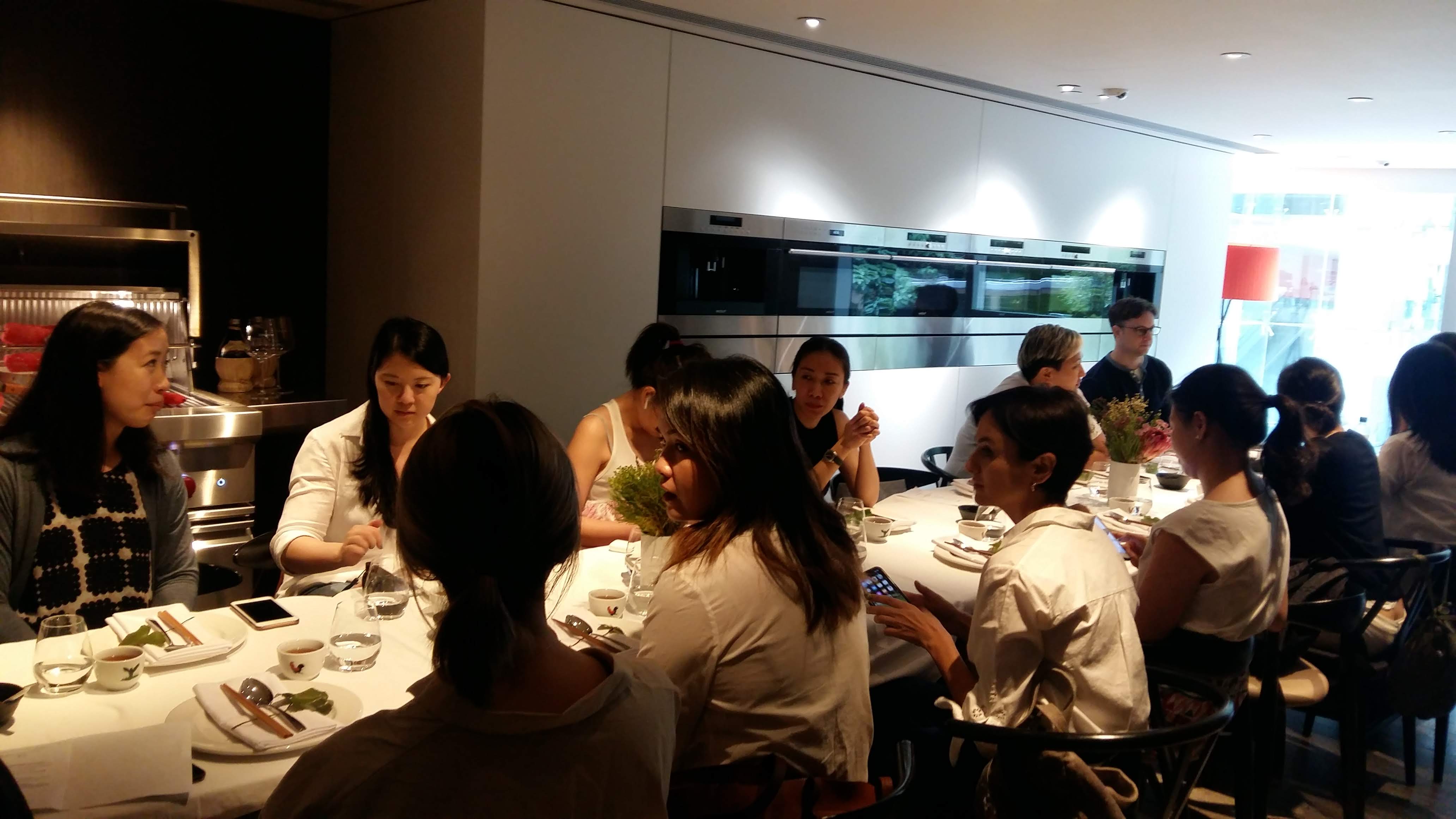
Mina Park, Hong Kong’s treasured South Korean American culinary entrepreneur, recently collaborated in the creation of a conscious kitchen with Slow Food at the House of Madison showroom. Her aim is to share her love of preparing temple food and utilise her training with temple food masters during various seasonal temple stays.
The intimate up-close and personal zen-like affair welcomed guests into the kitchen with a notion of symphonic quietude as Mina prepared to share the art of monastic cooking. Minimalist marbles, and the sleekness of Sub Zero appliances and earthenware were the backdrop for local seasonal Asian vegetables such as lotus root, and curious hand rendered Asian sauces and spice.
Mina explains that authentic monastic cooking involves everything made from scratch. Vinegar to soy sauce, foraging in the mountains, harvesting themselves. Mina returned to Korea several times with the intention to explore varieties of seasonal vegetation. Mina was asked to assist in the event of Buddha’s birthday, a day in which she harvested food to then feed a lot of people.
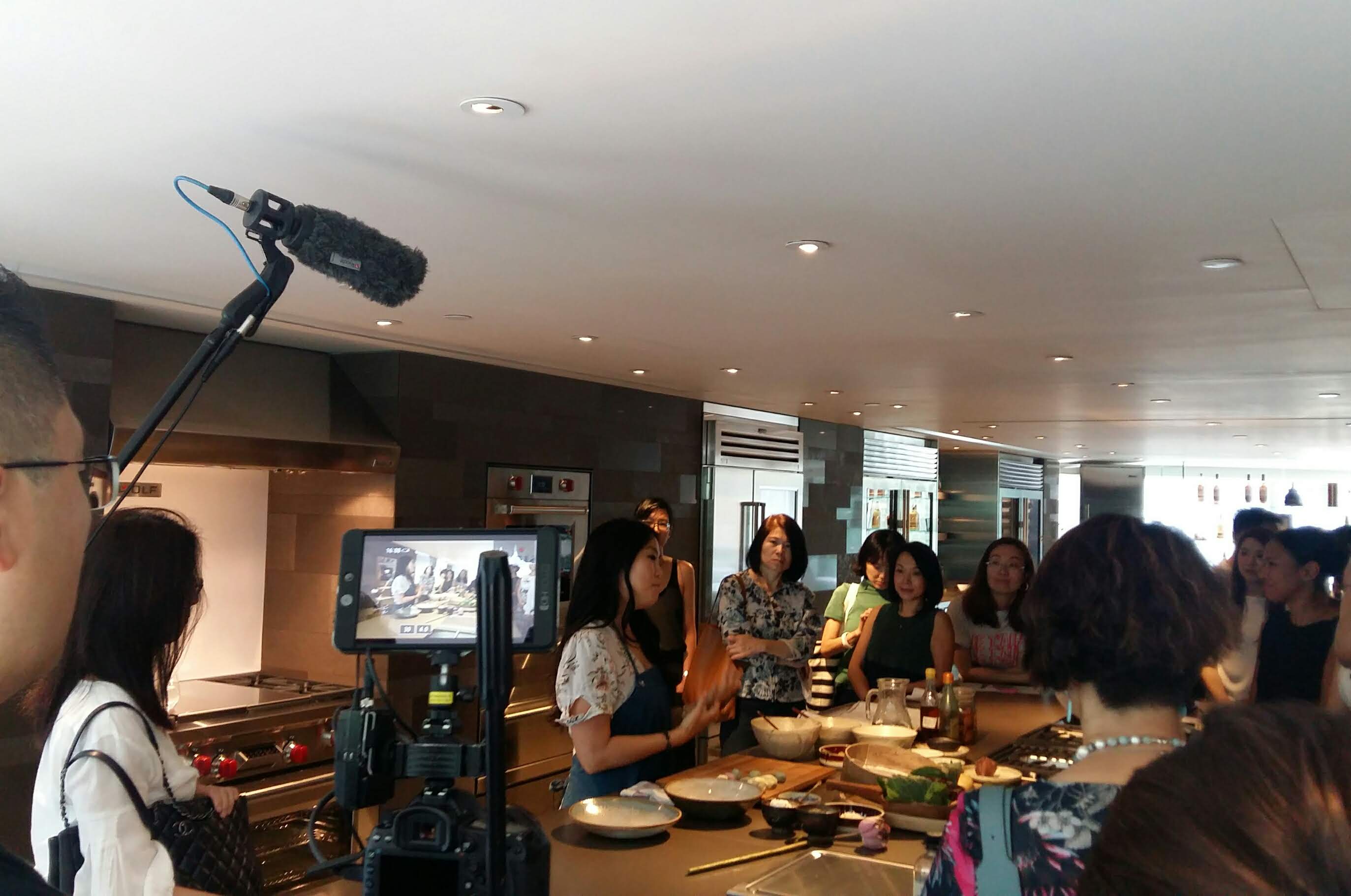
Temple food, first and foremost, is vegan in the sense of considering ones compassion and respect for all living things. Honey may be used once in a while. Second, some temple food bans the “five pungent vegetables” (garlic, onion, green onions, chives, Korean wild chives). Korean Chinese (monks) connect food to the body as medicine and have to maintain their peace by being free of desires. The 5 pungent vegetables, being heating and stimulating, are meant to arouse desire. Classic Korean food primarily uses garlic. For many Koreans, trying to imagine what Korean food taste like without onions and garlic is an anomaly. If you learn from any temple food master, the depth of their flavor comes from fermented foods. A lot of the complexities come from homemade vinegar and soy sauces. The only Korean ingredients available in Hong Kong are commercially made. Soy sauces may take up to 3 years from the moment you are washing the soy beans to the time its fermentation processes complete.
In Buddhism, cooking is always related to your energy. The way you pass your energy is through your hands. Mina recalled preparing dried vegetables at the temple, and as an American used to hygiene, wore plastic gloves. The temple food master asked “What are you doing? Take those gloves off…how are you supposed to pass your energy if you’re wearing plastic gloves? You need to be touching the food. Do everything with your hands!” “When people make fun of me (for gooey hands) it’s all related to temple food and my energy”, Mina added.
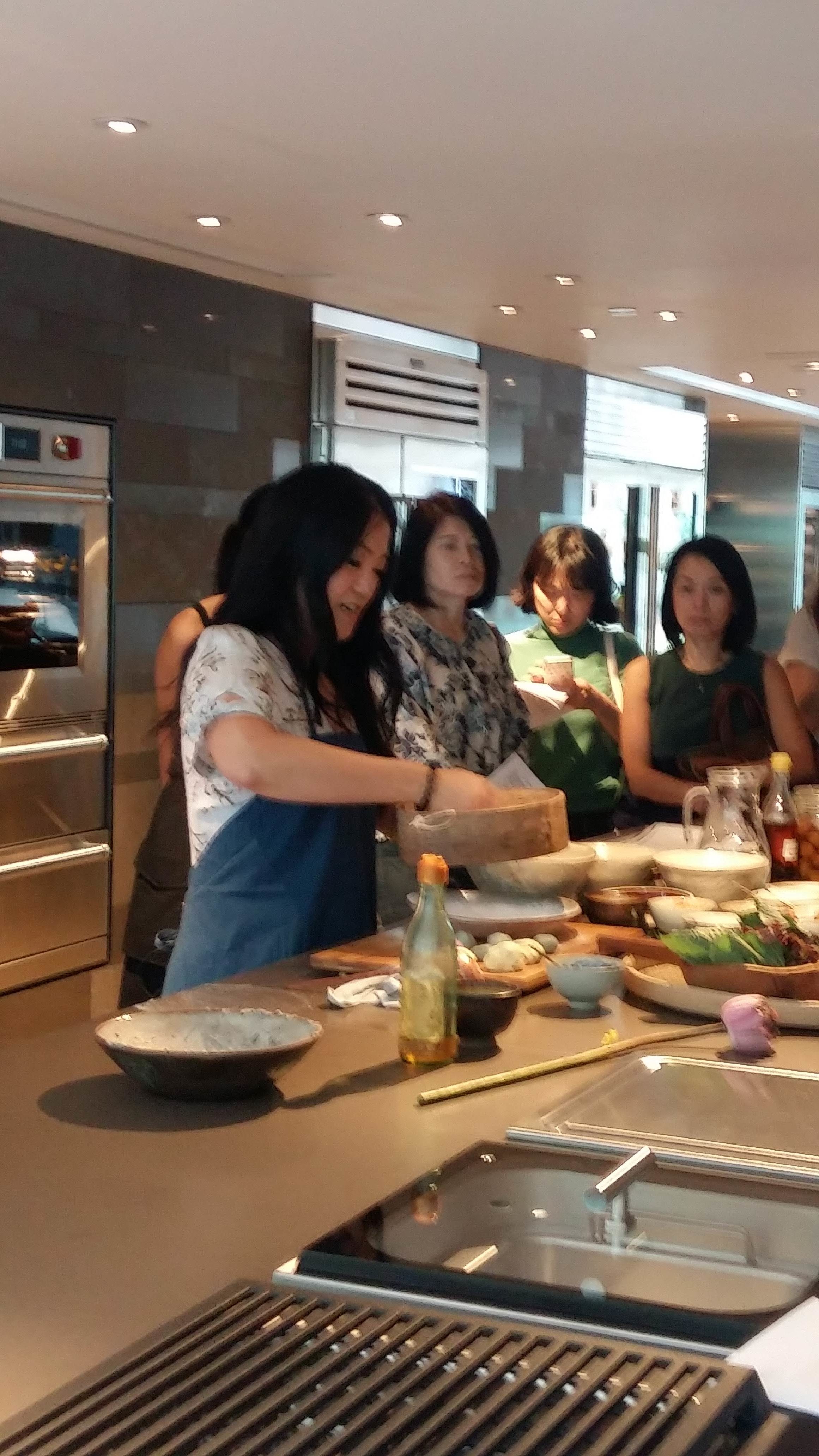
“Energy is really important when you’re cooking for people. For me and I’m sure for you when you cook, that when you are cooking for people you love it’s because you want to share something. And so the energy in which you do that is crucial. Senyum talks about cooking with love, with a calm mind. People would stop you and stay stop slow down be calm. if you’re stressed, that will come out in your food and your connection to the one you are serving becomes negative. Clear your mind if you can as it is a wonderful way to meditate. Thought that was useful.”
In the monasteries, food is layered in many ways. One must be concerned about balance, concerned about diet and the ways in which food affects general health and ability to practice. Food is just a way to sustain spiritual practice. One should eat nutritionally resulting in complex dishes with a lot of vibrancy through color trying to get enough nutrients. Dishes are beautiful but also functional. Some are eating very clean food. For the temple food master, sometimes that dwells a little conflict. If you are nun should you eat that? For temple food masters such as Jeong Kwan, it’s all about focusing on cooking. That is their spiritual practice. That is how they think they will achieve enlightenment. Cooking is the path to enlightenment. Our environment and connection to the environment becomes almost a form of activism. Life is very much connected to nature. If we become disconnected – we are losing respect to our connection to the environment. Mina agrees in the belief that it is our responsibility to sustain future generations. However stylistic and distinct, Mina imbues a humble culinary warmth with willingness to explore the ways of our natural wealth through heritage and connection to nature awakening our intuitive palette, thus reviving our innate desire to be in harmony and balance with all living things.
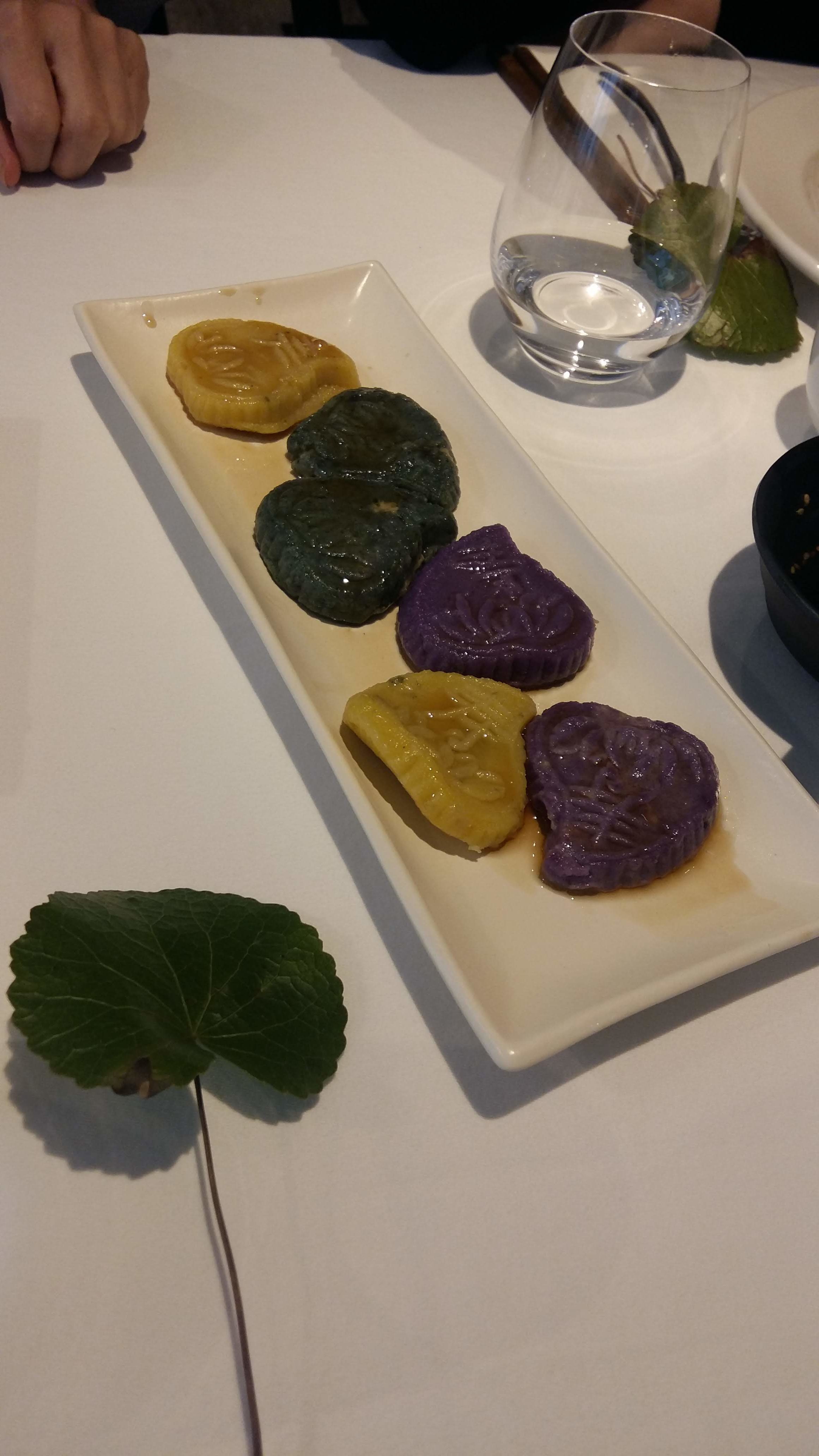
One could not help but to swoon over each dish during the luncheon that followed. Although monastic in food prep, no doubt twas Mina’s hand that brightened up our bellies. A grand last hurrah before her departure. Known for her project “Sook”, named after her mother, Mina served up refreshed Korean food traditions through workshops, collaborations and storytelling. We’ll be sure to check out Mina’s creations at the new “Old Bailey” restaurant by JIA Group within the newly opened Tai Kwun Center for Heritage and Arts in Central, which features rarely appreciated cuisine of Jiangnan. And when in West Coast California, will wait and see what Mina has in store next. The details of Mina’s exciting new stateside endeavor only reveals she’ll implement all that has inspired the ways of temple food mastery, vegan and slow food responsibility, whilst preserving South Korean Asian and family traditions.
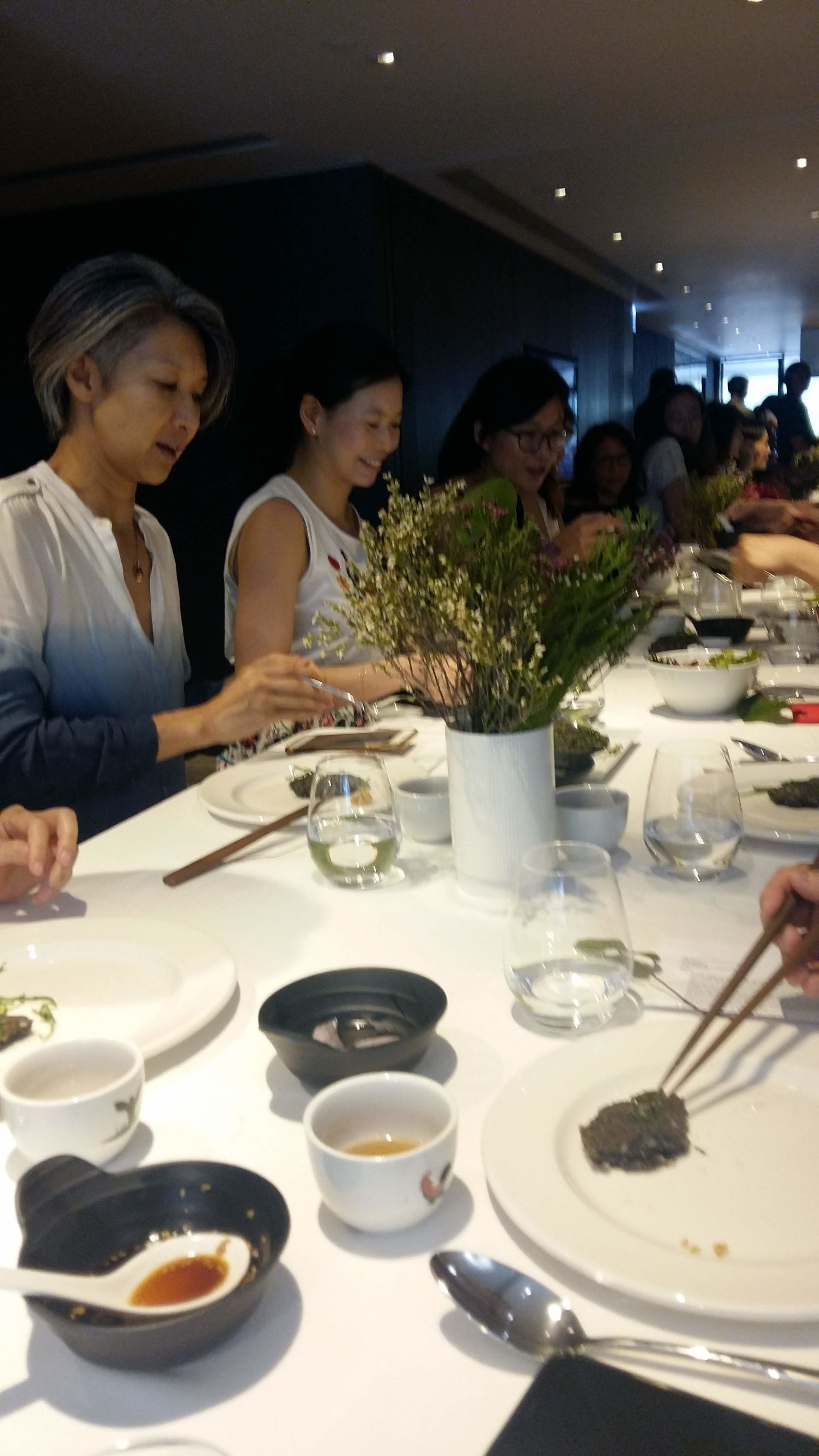
The day’s “Light Lunch” menu consisted of Lotus Root Pancakes made with Black Sesame, and old Temple Style Noodle with Temple Recipe of Red Pepper Paste + Hand Roasted/Ground Sesame Oil, Perila seed oil, gave us a sense of flavor without onions and garlic.
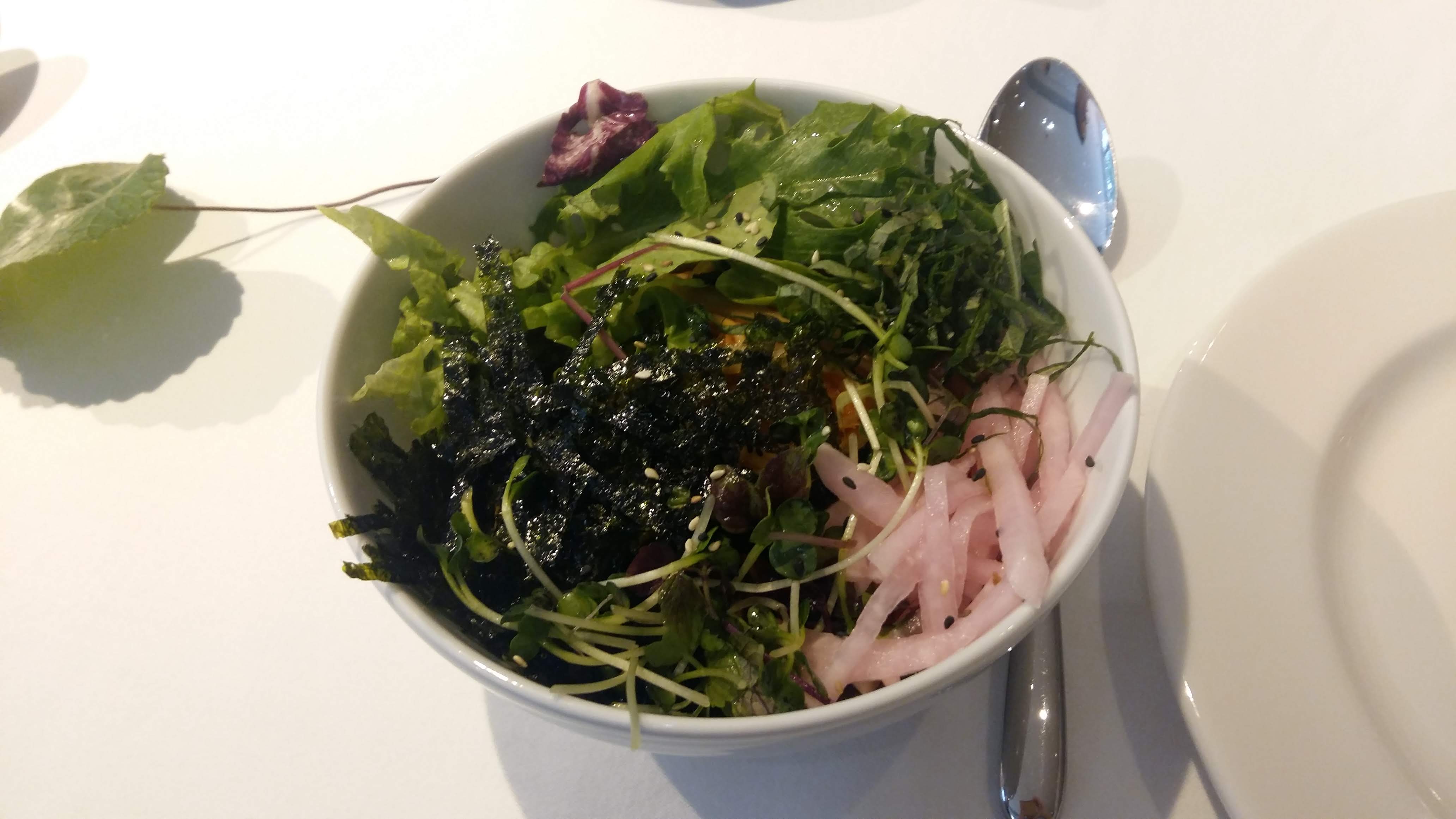
Mina’s temple and slow food recommendations:
- Korean Temple stays – There is a wonderful program that the Korean Government runs.
- Quarry Bay Farmers Market aims to champion local HK farming
- Jogyesa Temple – The main buddhist temple. Visit during Buddha’s birthday when cherry blossoms out, and lanterns all over the city.
- Tugaso Temple’s canteen